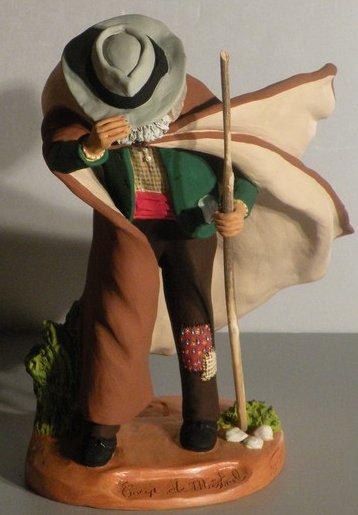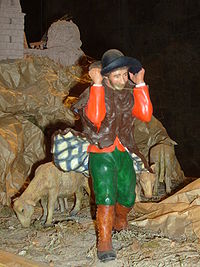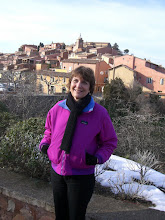
This northern wind, generated by differences in pressure and temperature between la Manche (the English Channel) and the Mediterranean, blows nearly 130 days a year in the Vaucluse. Mainly active from November through April, it sweeps down through the narrow Rhone valley, often reaching speeds of 170 km hour (105 mph) on top of Mont Ventoux. Some poplar trees, it is said, are permanently bent in the direction that the mistral pushes them. The plus side of such a violent wind is that it clears the air and usually brings in sunny skies of the most brilliant blue.

Like le foehn in Switzerland and la tramontane, the mistral's “sister” coming down from the north and out of les Pyrénées in southwestern France, this wind is considered part
 of the region's culture. It figures in a series of paintings of Cap d'Antibes by Monet and has been the subject of several petits santons (or “little saints”)--like those by Paul Fouque--that are lovingly placed under the tree at Christmastime. One of Fouque's creations, called le Coup de Mistral, (or roughly "A blast of mistral") is considered a masterpiece of the santons and features a berger ("shepherd") holding his hat and staff and fighting against the wind. For us today, the mistral only creates minor irritations like the power going off every couple of minutes which means that the Wi-Fi takes time to reboot.
of the region's culture. It figures in a series of paintings of Cap d'Antibes by Monet and has been the subject of several petits santons (or “little saints”)--like those by Paul Fouque--that are lovingly placed under the tree at Christmastime. One of Fouque's creations, called le Coup de Mistral, (or roughly "A blast of mistral") is considered a masterpiece of the santons and features a berger ("shepherd") holding his hat and staff and fighting against the wind. For us today, the mistral only creates minor irritations like the power going off every couple of minutes which means that the Wi-Fi takes time to reboot.

1 comment:
It is funny how what seems to be very strong winds can inspire such beautiful art. I wonder about le mistral and if it gets serious or dangerous at any point, I know that you said when it occurred when you were there it was not as severe as it sounded, however have there even been cases where it was the opposite. This is similar to American art and certain pieces we have here documenting everyday activities that are occurring in everyday life. Life is Art and Art is an innate human characteristic, which can range from the sound of a beautifully played cello to a simple can of Campbell's tomato soup.
Post a Comment